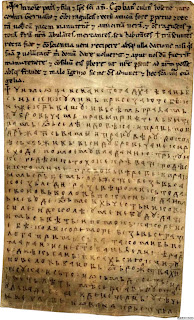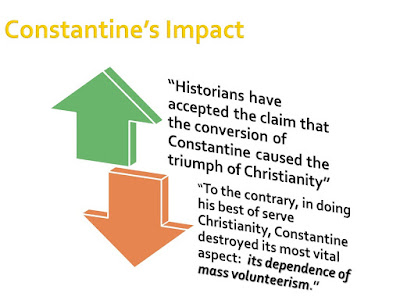One Benefit of Go Karting with a Crazy Driver
As a belated Christmas present, and possibly because he felt
guilty for endangering my life on Thursday with his wild go kart driving, Emir
Kaknjasevic gave Dionne and I a wall map detailing the history of the Bosnian Kingdom.
 |
| Within the past month, two indoor go kart places have opened up in Sarajevo! |
The oldest known written mention of Bosnia is in the work De administrando imperio from around 950 c.e. The Byzantine emperor
lists the country Bosnia (“Horion Bosnona”) and mentions two towns. In 1463 the
Ottoman Empire invaded and the medieval state of Bosnia failed to exist. In
between these two time periods was the “Bosnian Kingdom.”
 |
| The informational map that Emir gave us for Christmas. |
The Bosnian Kingdom
The history of this kingdom is fascinating. But the one
thing that caught my eye was the Bosnian faith. At the crossroad between East
and West and their two Christian powers (Catholic and Orthodox), for centuries
these two faiths tried to impose their will upon Bosnia. But the people
resisted and a unique brand of Christianity, labelled the “Bosnian Faith,”
developed and flourished. This faith was deemed heretical by the Catholic
Church and they organized crusades to defeat it. The will and faith of the
Bosnian church was strong and they were able to defend against these attacks.
This served to further strengthen their faith. And it was the practitioners of
this faith that ultimately converted to Islam following the Ottoman invasion.
Their heirs form the backbone of the Muslim faith in Bosnia.
 |
| Dionne and I at the Jajce castle which dates to the 14th century. |
So what was this Bosnian faith? Where did it come from? What
were its features? Why did the existing religious authorities feel so
threatened by this faith? Emir’s gift led me on a journey to try and discover
some of these answers. Here is the summary from the wall map he gave us of the
Bosnian Faith.
 |
The Bosnian Faith
So what was so unique and threatening about the Bosnian
faith? At first glance, nothing that obvious. The Bosnian faith was never
imposed on people by force. Those who didn’t accept it were never persecuted.
It did not request or collect any taxes from either the common people or the
rulers. They did not build churches or buildings, preferring to meet outdoors
or in homes. The Bosnians simply called it “our faith” or “our laws.” While
under attack, both the people and the ruler would stand together by their faith
and defended it together. Bogomils were very educated people; at one time, there
was a university in Moštre
near Visoko. There was also a scriptorium in which religious and common books
were copied by hand.
 |
| The so-called Bosnian Charter (trade agreement with Dubrovnik and Kulin). While highly educated, many of the Bosnian documents were lost or destroyed because they were considered heretics. |
But there were also features that would have been considered
both threatening and heretical to the two established churches.
- · They rejected the trinity
- · They rejected the holiness of Mary
- · They believed that God the Father would be the ultimate judge
- · They did not accept the cross
- · They rejected Christian ordinances such as baptism and the sacrament
- · They rejected the saints
- · They strongly preferred the New Testament over the Old
- · The church did not hold private property
- · The most pious would fast 3 days each week
- · The most pious not eat animal products except fish
- · The most pious would not marry
- · But they rejected monasticism
- · The main leaders were called elders (djed) and had a council of 12 (strojnici)
- · They taught honest, charity, and equality of material possessions
 |
| Description of the "Bosnian Faith" |
With regards to the cross, this was their philosophy. “If
someone killed the king’s son with a piece of wood, do you think the king would
regard the weapon as holy?”
Four Weddings and a Funeral
Bosnian marriage was a non-frills affair now called
“marriage in the Bosnian style.” The marriage ceremony in Bosnia needed no
church or priest, and was very simple: the bridegroom would loudly ask the
bride in front of all the village folk “Will you be good and loyal to me?” and
if the answer was “yes,” marriage would be declared. This was the practice of
both common folk and nobility.
When someone died, they would be buried under a stećak, a
tall-standing tombstone. Nearly 60,000 of these headstones remain standing in
Bosnia; some weighing as much as 10 tons. A finished stećak would be transported by horse
or oxen teams; people would use logs or special sleighs to carry it to the
burial place. If you see a raised hand on a stećak, it is a greeting that shows
friendship and good will and the message “the Sun is shining from my palm.”
 |
| Examples of Stećak. |
Strength From Opposition
Both the Catholic and Orthodox authorities were concerned
about reports of this new faith. In 1200 c.e. Pope Innocent III instructed the
Hungarian King Emmerich to “go and ascertain the truth of these reports and if
Kulin (Bosnia King) is unwilling to recant, drive him from your lands and
confiscate his property.” Kulin hid the truth from the Hungarians and continued
to practice the Bosnian faith. The first Bosnian Crusade began in 1225 c.e.
That and several other missions failed as the Bosnians were able to defend
their land and beliefs. This success merely strengthened the state and the
faith.
 |
| At its height, the Bosnian Kingdom included parts of Croatia, Serbia and Montenegro. |
After several hundred years defending their homeland, the
nation had weakened. The remaining adherents to the faith voluntarily converted
en masse to Islam in the 15th century. There were two main reasons
for this. First, there were many similarities between their faith and Islam
including regular fasting, love of charity, and truthfulness. Second, the
existing Bosnian King had begun to persecute his followers who were Bogomils.
Many of them sought protection from the Ottoman empire which was well-known at
the time for its tolerance.
 |
| The knights in the Bosnian kingdom were highly regarded |
Rodney Starks and The Rise of Christianity
I am personally intrigued by the history of the Bosnian
faith because I have studied and generally agree with the scholarship of Rodney
Starks; a sociology professor at Baylor University who has published over 30
books and 140 articles on the sociology of religion. Some of his most
provocative and interesting work relates to early Christianity. His studies
have led him to conclude that early Christianity spread dramatically through
both ancient Rome and among Hellenized Jews through the first few centuries. As
shown by the numbers below, Christianity had already conquered the Roman world
statistically by the time of Constantine. By 350 c.e., 57% of Romans were
Christians.
There were a number of factors that made early Christianity
attractive. The existing Jewish network (diaspora) provided ample opportunity
to preach to a familiar audience. According to Starks, “Jews continued as a
significant source of Christian converts until at least as late as the 4th
century.”
Christianity was also a populist movement and was particularly
appealing to women. “Christianity appears to have been especially successful among
women. It was often through the wives that it penetrated the upper class of
society in the first instance” (British historian Henry Chadwick). The
following graph shows some of the factors which explain the remarkable early
Christian growth.
Most people view Constantine’s conversion as the beginning
of Christendom. Starks, on the other hand, views Constantine’s conversion as
the beginning of the end of Christendom. Before Constantine Christianity was
growing person-to-person. After Constantine, Christianity grew because it was
the “state” religion. But true individual conversion faltered under the weight
of becoming the state church. “High levels of religious participation were
never achieve because real, person-to-person Christian missions faltered in the
4th century and never reached these areas” (Rodney Starks).
Accordingly, Starks tells us that “mediaeval Christendom is a fiction” and that
“at most Europe was superficially Christianized.” “Southern Europe was the only
part of Europe ever to be Christianized.”
Scholarly Confusion About the Bosnian Faith
Scholars are not sure what to make of the Bosnian faith. Since few documents have survived from the period, scholars are reliant on the historical account of the "victors" to try and piece together the particulars. The kingdom also suffered political ups and downs. Towards the end, there are reports of political confusion within Bosnia.
One account of Bosnia written by the French pilgrim Gilles Le Bouvier, paints a miserable picture of the place: 'They live purely on wild beasts, fish from the rivers, figs and honey, of which they have sufficient supply, and they go in gangs from forest to forest to rob people who are traveling from one country to another.
But nearly all scholars agree that the Bosnian faith was something quite different than the Catholic or Orthodox faiths. Why? Because of the steady stream of missives sent by Rome to Hungary extolling them to get the heretics under control. While many scholars describe the faith in different ways, there is only one scholar, the University of Michigan's John Fine, who argues that their was no distinctive Bosnian faith; instead he feels that they were misunderstood Catholics. Personally, as I have reviewed Fine's evidences, I find them not compelling.
Gnostics, Arians, Bogomils, Dualists, Modalists, Manichaeans, Cathars, Protestant Precursors or Something Else?
I am sorry that this article has taken a an academic turn. Let me throw you a winter picture from Riders of Hope to give you a quick break.
 |
| On Mondays Dionne and I have been helping out with the horses. |
Whenever the try to describe a unique belief set, scholars are wont to assign classifications using labels that they have seen in the past. We saw this immediately with the advent of Mormonism. Labels such as Armianism, Campbellism, Masonism, Anti-Masonism, Modalism, and Arianism have been applied to Latter-Day Saints. Scholars try to understand new things based on their own area of expertise. And by labeling something, it is easier to dismiss it based on straw argument that occurred when an idea first appeared in history.
With the passage of time, as we know, Mormonism has been shown quite resilient to these types of simplistic labels. It only took 200 years before a scholar really figured out what was going on. Jan Shipps famously identified Mormonism as a "new world faith," the first since Mohammed received his revelations.
 |
| Seminal work by Jan Shipps which helped redefine the Mormon Studies movement. |
Scholars attempt to classify the Bosnian faith in many ways. I have listed some of the labels above. I am particularly interested in the label "gnostic" because I have spent some time with the Nag Hammadi texts and am considering writing a paper about one of the non-gnostic texts found in that library.
A reason scholars are prone to label is because they have a need to explain every belief based on its predecessors. True innovation is consider rare. And the very nature of scholarship disallows any form of spiritual inspiration. The one certainty, for scholars, is that the practitioners of the Bosnian faith could not have been inspired. I am not personally bound by these rules. I am willing to consider that members of the Bosnian faith may have been inspired and that they were following the promptings of the Holy Spirit. Fortunately I have another 12 months in country to study this fascinating faith.






Very interesting post. I hope you'll share what you learn!
ReplyDelete